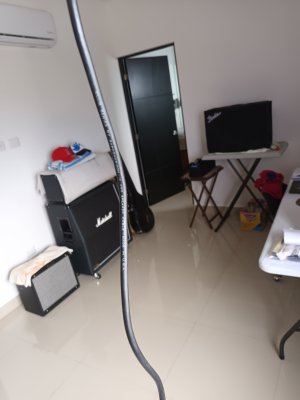- Messages
- 6,865
at the end both controls are in series so you won't be driving the power amp higher if the MV is higher for example. The power amp "sees" whatever signal you put into its input and delivers power based on that. If this amp had a post phase inverter volume you could drive harder the phase splitter with a higher channel volume but it is not the case with the JVM and any amp with pre-PA master.
I know many people out there think that they are driving the power amp mpre having the MV high but sorry, that's just not the case in the JVM or in any amp with similar design (pretty much all the multi-channel amps out there).
Regarding noise, I'd suggest to have the channel volumes as high as you can, then set the overal listenning volume with the MV. The tone difference will be suble if you choose to have lower CV and higher MV. The general rule for maximizing noise performance in any circuit is to have as much gain as early as possible, this is the reason why you should have as much signal as you can into your audio interface and so on.
The way it was designed was to set the Clean Green to whatever gain/tone you like and then set the rest ov CV to match. They should be around noon.
The Satriani version has some frequency shaping around the channel volumes so the amp gets darker the lower the channel volume is. The standard one is pretty much flat, the frequency variations are subtle when using different volume settings
Really interesting. When I owned the DSL, conventional wisdom on forums was the amp sounded best with the master volume cranked and then channel volumes dialed to whatever level your ears could withstand. (Generally pretty low since the master is cranked)
You seem to indicate it’s actually the reverse (at least with the JVM) that the best thing to do is crank the channel volume(s) and use the master to tame it down to “the police won’t get called tonight” levels.
Great feedback.



